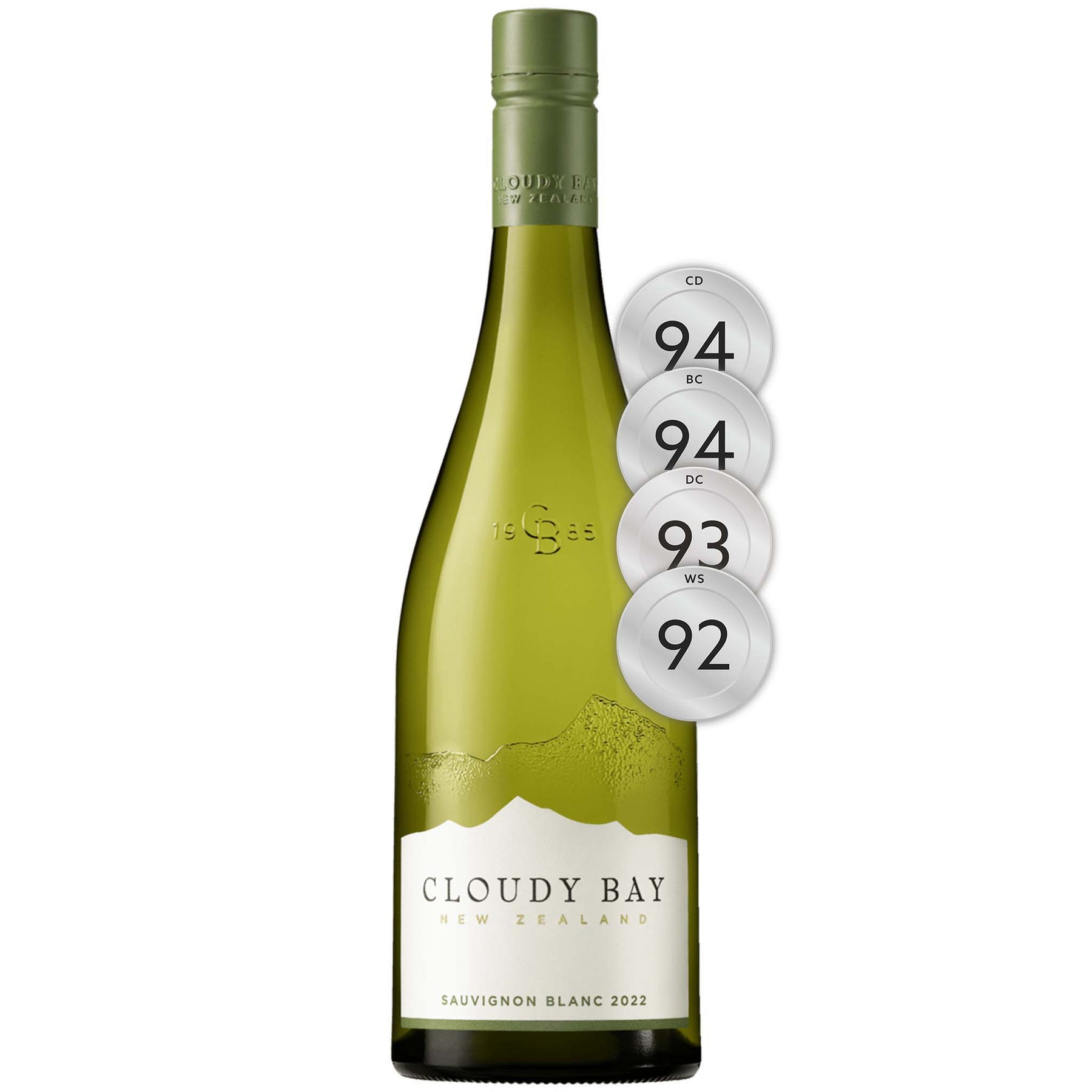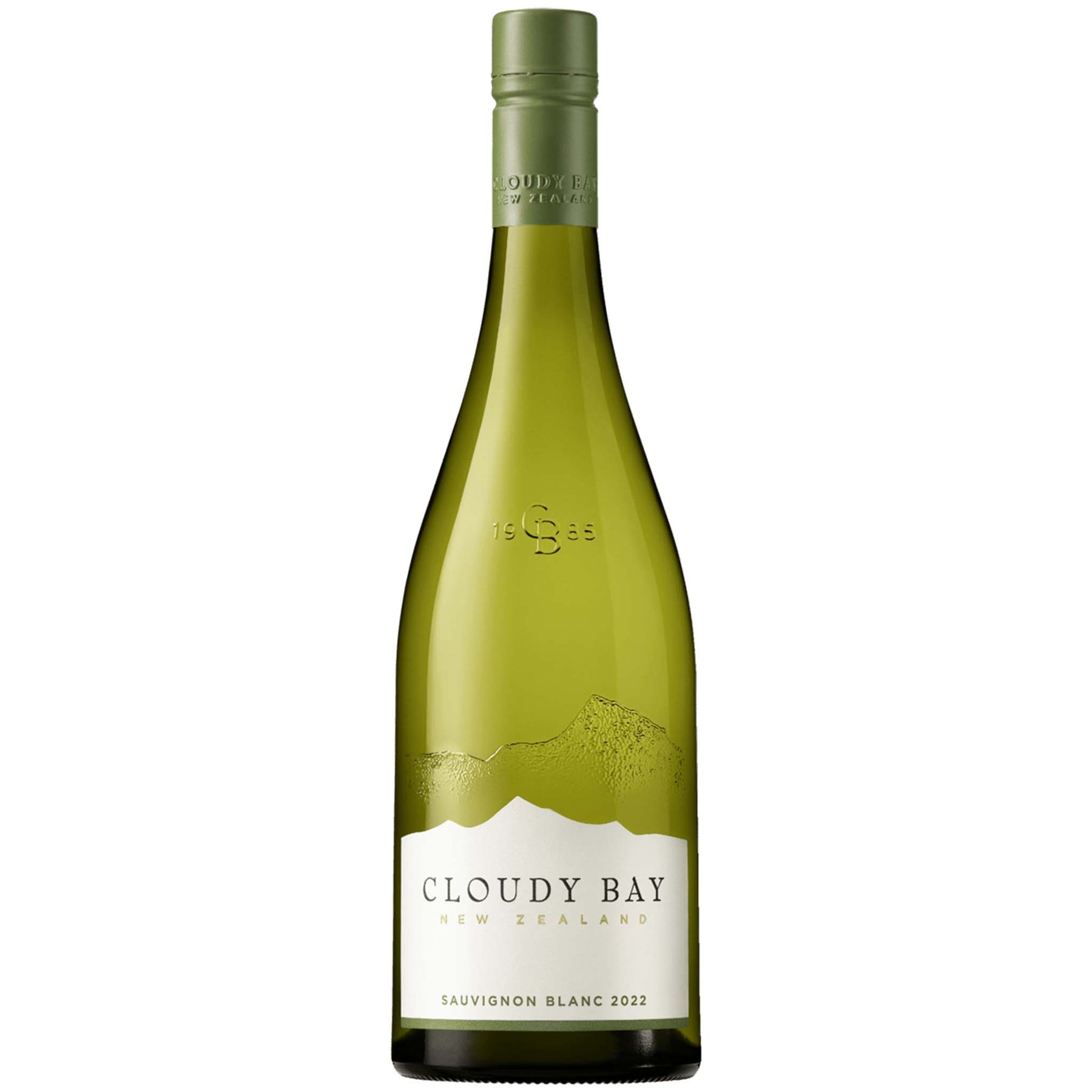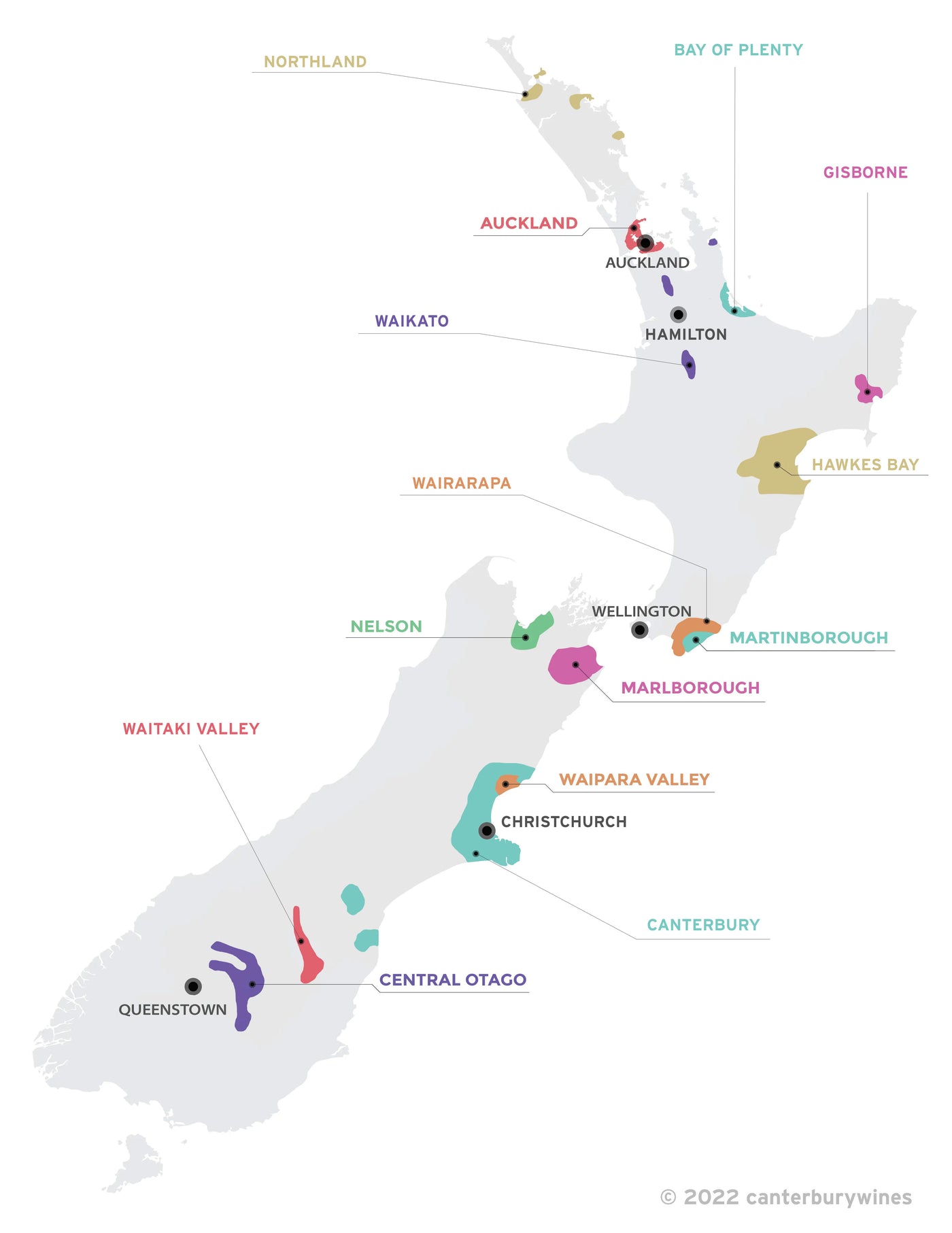

Cloudy Bay Sauvignon Blanc 2022
Style: White Wine
Closure: Screwcap
Cloudy Bay Sauvignon Blanc 2022
Warehouse
34 Redland Drive
Vermont VIC 3133
Australia
Producer: Cloudy Bay
Country: New Zealand
Region: Marlborough
Vintage: 2022
Critic Score: 94
Alcohol: 13.3%
Size: 750 ml
Drink by: 2030
Cloudy Bay, established in 1985 by David Hohnen, was largely responsible for the meteoric rise of Marlborough sauvignon Blanc that put New Zealand on the world wine map. Their first vintage was a great success. Demand outstripped supply almost immediately. Cloudy Bay Sauvignon Blanc rapidly gained iconic status. Its star continues to shine brightly today, nearly 40 years later.
"Fantastic bouquet, vibrant and fresh with layers of subtlety and finesse, minerality and varietal fruit aromas of lemon and passionfruit. white peach and red apple, fresh herbs and crunchy yellow bell-pepper. Delicious on the palate with a satin touch followed by core fruit flavours that reflect the bouquet, fresh herbs and white spice, mineral and a saline quality." Cameron Douglas MS
The grapes come largely from vineyards in the heart of the Wairau Valley sub-region, where the vines live in the coarse, free-draining gravelly soils of the old river valley.
"The 2022 Sauvignon Blanc has a zesty and vibrant nose, with notes of juicy citrus and makrut lime underpinned by subtle white nectarine and passionfruit notes. The palate is mouthwatering, with ripe vibrant passionfruit and citrus at the fore. These meld with tropical hints of peach and guava, gently balanced by stony saline notes." Cloudy Bay
Expert reviews
"Fantastic bouquet, vibrant and fresh with layers of subtlety and finesse, minerality and varietal fruit aromas of lemon and passionfruit. white peach and red apple, fresh herbs and crunchy yellow bell-pepper. Delicious on the palate with a satin touch followed by core fruit flavours that reflect the bouquet, fresh herbs and white spice, mineral and a saline quality. Best drinking from 2023 through 2029." Cameron Douglas MS, camdouglasms.com – 94 points
"Punchy, vibrant wine with restrained passionfruit, lemongrass, capsicum and guava flavours supported by tangy, mouthwatering acidity. The wine is sporting a new proprietary bottle and label which cleverly preserves the shaded hills that were such a feature of the previous label. The price remains the same. drink: 2022-2026." Bob Campbell MW, The Real Review - 94 points
"A pungent, punchy nose with plenty of Sauvignon Blanc character. Peach, blackcurrant leaf and kaffir lime leaves are blended with grapefruit zest and tarragon. Linear and bright with a ramrod-straight acidity and a long finish." Decanter - 93 points
"Stands out for its intensity, with ruby grapefruit, yuzu and lemon essential oil details, plus notes of fresh-clipped, aromatic herbs centered around lemon thyme on a sleek, juicy frame. Long, expressive finish." MaryAnn Worobiec, Wine Spectator - 92 points
Vineyards

Marlborough Vineyards
Cloudy Bay farms 163 parcels of vines and 65 grower blocks in Marlborough. Those parcels closer to the Wairau River have stony, sandy and free-draining soils ideal for the iconic Sauvignon Blanc. Further south of the river in the Southern Valleys, the Pinot Noir and Chardonnay vineyards love the heavy clay-based soils.
Cloudy Bay Sauvignon Blanc comes largely from vineyards in the heart of the Wairau Valley sub-region, where the vines live in the coarse, free-draining gravelly soils of the old river valley. This soil type was identified by David Hohnen as ideal for the style of Sauvignon Blanc he wanted to make. The vineyards include the Cloudy Bay Estate, Motukawa, Widow's Block and Red Shed Vineyards. The soils, together with the Valley's climate, create the perfect conditions for growing Sauvignon Blanc grapes. The resulting wines are pure, vibrant and full of concentrated stone fruit, citrus and subtle tropical characters. This is the Cloudy Bay benchmark style.
Cloudy Bay Pinot Noir comes from vineyards in the Southern Valleys, a sub-region to the south of the Wairau Valley. The three main Southern Valleys, Brancott, Omaka and Waihopai are home to three Cloudy Bay vineyards; Delta, Mustang and Barracks respectively. All the vineyards have heavy clay-based soils.
These three vineyards cover the breadth of ideal conditions for Pinot Noir: one is a valley, one is rolling and one is elevated. The clay soils of the Southern Valleys are cooler and hold more water than those of the gravelly Wairau Valley. Sloped sites give longer exposure to the sun for perfect maturation. Through attentive winemaking, the three terroirs find their voice in every vintage.
Cloudy Bay’s approach to Chardonnay is all about balance and harmony. Vineyards planted in the stony soils of Wairau Valley and the dense clay of the Southern Valleys work together to create a wine that marries ripe stone fruit and citrusy elegance. The key vineyards for the variety include Barracks, Motukawa, Estate, Mustang, and Brook Street.

Marlborough sub-regions
Central Otago Vineyards
Central Otago’s climate stands in stark contrast to Marlborough’s benign nature. The growing season is short and intense, with high daytime temperatures and frequently cold nights. These extreme fluctuations in the diurnal cycle lead to very ripe fruit flavours and high acidity.
Cloudy Bay chose two complementary terroirs to make wine in Central Otago. The grapes produced from each of their Central Otago vineyards couldn’t be more different, despite being grown only 15km apart.
They lease a portion of the Calvert vineyard, situated on Felton Road in the Bannockburn sub-region. The vineyard is on the rolling terrain of an ancient lake bed and Its silty, loamy soils and gentle slopes create wines of opulence and elegance, with fine tannins and silky textures.
The 26ha Northburn vineyard, a 26ha purchased in 2014, sits on the eastern shores of Lake Dunstan in the Cromwell/Lowburn sub-region. It is steep and hilly, with terraces of unforgiving, rocky glacial soils, which produce wines of structure and intensity.
Their acclaimed 'Te Wahi' Pinot Noir is a blend of fruit from the Northburn and Bannockburn vineyards, resulting in a wine of poise and power.

Northburn Vineyard, on the shores of Lake Dunstan, Central Otago
About the winery

The beginning of Cloudy Bay dates back to 1983 when a handful of Kiwi winemakers visited David Hohnen at his Cape Mentelle winery in Margaret River and left a few bottles of New Zealand wine to thank him for his hospitality.
He tasted the wines and was so amazed by a bottle of Marlborough Sauvignon Blanc, "It was a bit sugary sweet, but the aromatics were amazing", that he flew to New Zealand. He visited Auckland and tasted Selak’s Marlborough Sauvignon Blanc. It was made by Kevin Judd, a young Aussie winemaker working in New Zealand. Hohnen was captivated and resolved to plant vines and make wine in Marlborough. So began a journey to bottle the essence of Marlborough and share it with the world.
"The world has never seen a revolution in wine taste like Marlborough Sauvignon Blanc It turned the accepted benchmarks upside down. The old world classics were threatened. Sauvignon Blanc had never tasted like this. So pungent; so fruity; so excitingly vibrant; almost shocking to the senses. It was such a revolution that winemakers from France, Switzerland, Germany and Austria came to Marlborough to be a part of it. Henri Bourgeois, famous for Sauvignon Blanc in Sancerre and Pouilly Fume, set up shop in Marlborough to see what they could do in a totally new land with the grape they considered their own." Huon Hooke
Hohnen borrowed $1 million (at an interest rate of 23%!) to finance his Marlborough winery venture. He appointed Kevin Judd as chief winemaker - who remained at Cloudy Bay for 24 years (later as general manager) until leaving to launch his own brand in 2008.
Cloudy Bay’s first vintage was in 1985. They purchased 40 tons of grapes and made the wine up in Gisborne. In 1986 Cloudy Bay constructed a winery on Jackson's Road in the Wairau Valley. They also signed a contract with Corbans to supply them with 120 tons of Sauvignon Blanc a year from the Motukawa vineyard – the vines were 5 years of age and 'next door' to the winery. The ball was rolling.
The Motukawa vineyard was owned by the Neal family and as Phillip Neal recalled in 2015, "My father thought ‘This company has invested in Marlborough; they’re putting money into the area'. We liked David Hohnen: we were impressed by his no-bullshit attitude. You knew where you stood with him. And so we’ve always been a Cloudy Bay grower. We now have 50 hectares of producing vines, and we normally make the cut for the Cloudy Bay sauvignon blanc. We sell all our sauvignon blanc to Cloudy Bay. We’re planting another 10 hectares this year and 10 more next year."
The first vintage of Cloudy Bay Sauvignon Blanc was a great success. Demand outstripped supply almost immediately. The wine was sold on allocation. Cloudy Bay Sauvignon Blanc rapidly gained iconic status. The 1996 Cloudy Bay Sauvignon Blanc was the first New Zealand wine ranked in the Wine Spectator Top Wines of the World list.
It was not only the wine that was superb quality and a revelation. As Huon Hooke observed, "The name Cloudy Bay already existed – it was the place the Wairau River emptied into the ocean at Blenheim – and the scene on the label also existed. It’s the layered range of forested hills flanking the Wairau Valley. It just needed a brilliant sensibility to put it on a label together with that name. Most of us had never seen such a beautiful label on a bottle of wine, coupled with an evocative, romantic sounding name."
Despite the success of Cloudy Bay, Hohnen found the role of CEO somewhat stressful and was dissatisfied. "The company had become huge", he says, "and I’d given away all the jobs I liked doing". He negotiated the sale of Cloudy Bay (together with Cape Mentelle) to Joseph Henriot, who owned Veuve Clicquot Champagne, and left Cloudy Bay in 2003.
Seven years later, in 2010, Cloudy Bay became part of Louis Vuitton Moet Hennessy (LVMH), a French multinational corporation that owns 75 iconic Maisons, including 22 wine and spirit companies in its portfolio.
Cloudy Bay Sauvignon Blanc's star continues to shine brightly today. According to Moet Hennessy CEO, Jean-Guillaume Prats, Cloudy Bay is exported to 120 countries and is better known than many of the classified growths of his home, Bordeaux. "And it sells for twice the price of other volume Marlborough sauvignon blanc producers in export markets," he boasts.
Cloudy Bay is most famous for its Sauvignon Blanc but it also produces exceptional Chardonnay, Pinot Noir and Pelorus méthode traditionnelle from its 310 hectares of vineyards throughout Marlborough and Central Otago. Cloudy Bay has the resources, experience and motivation to maintain its very high standards. They show no sign of resting on their laurels.

New Zealand
New Zealand is home to more than 700 wineries across 14 wine regions. The regions are Auckland, Bay of Plenty, Canterbury, Central Otago, Gisborne, Hawkes Bay, Marlborough, Martinborough*, Nelson, Northland, Waikato, Waipara Valley, Wairarapa and Waitaki Valley. * Martinborough is a sub-region of Wairarapa, however, as it is world renowned it is considered here to be a region to avoid confusion.
The wine regions in New Zealand stretch from latitudes 36°S (Northland) in the north (comparable in latitude to Jerez, Spain), to 45°S (Central Otago) in the south (comparable in latitude to Bordeaux, France). New Zealand's climate is maritime, producing cooler summers and milder winters than would be expected at similar latitudes in Europe.
Viticulture in New Zealand dates back to 1836 when British resident James Busby produced wine in the far north, but it wasn't until 1985 that the wine industry came of age when Cloudy Bay Sauvignon Blanc garnered international attention and critical acclaim.
New Zealand is internationally renowned for Sauvignon Blanc (particularly from Marlborough), Pinot Noir (Central Otago, Martinborough and Waipara Valley), Chardonnay, Bordeaux-style blends of mainly Merlot and Cabernet Sauvignon (Hawkes Bay) and Syrah (Hawkes Bay). Sauvignon Blanc accounts for 63% of the area of the national vineyard, followed by Pinot Noir (14%), Chardonnay (8%), Pinot Gris (7%) and Merlot (3%).

